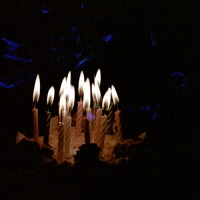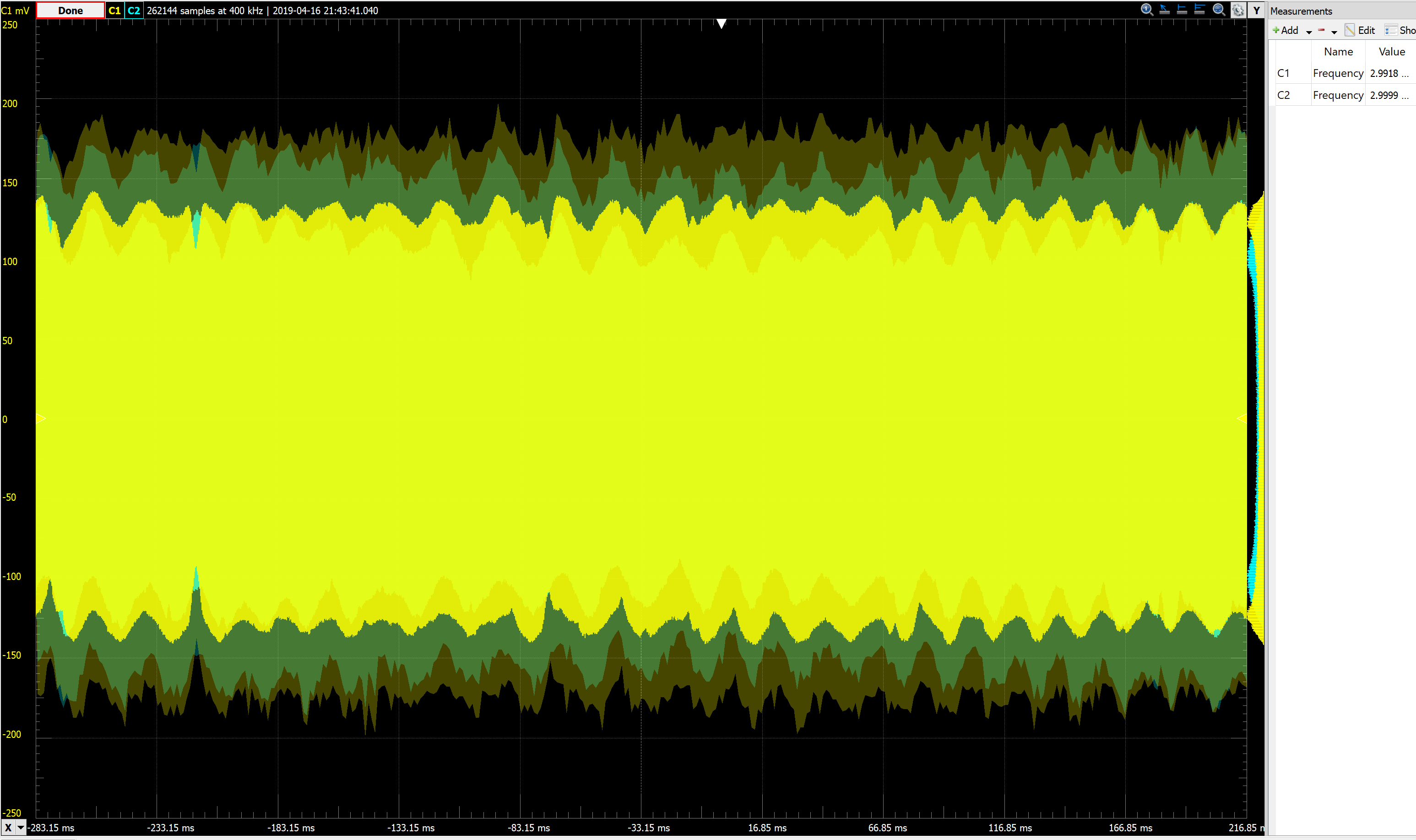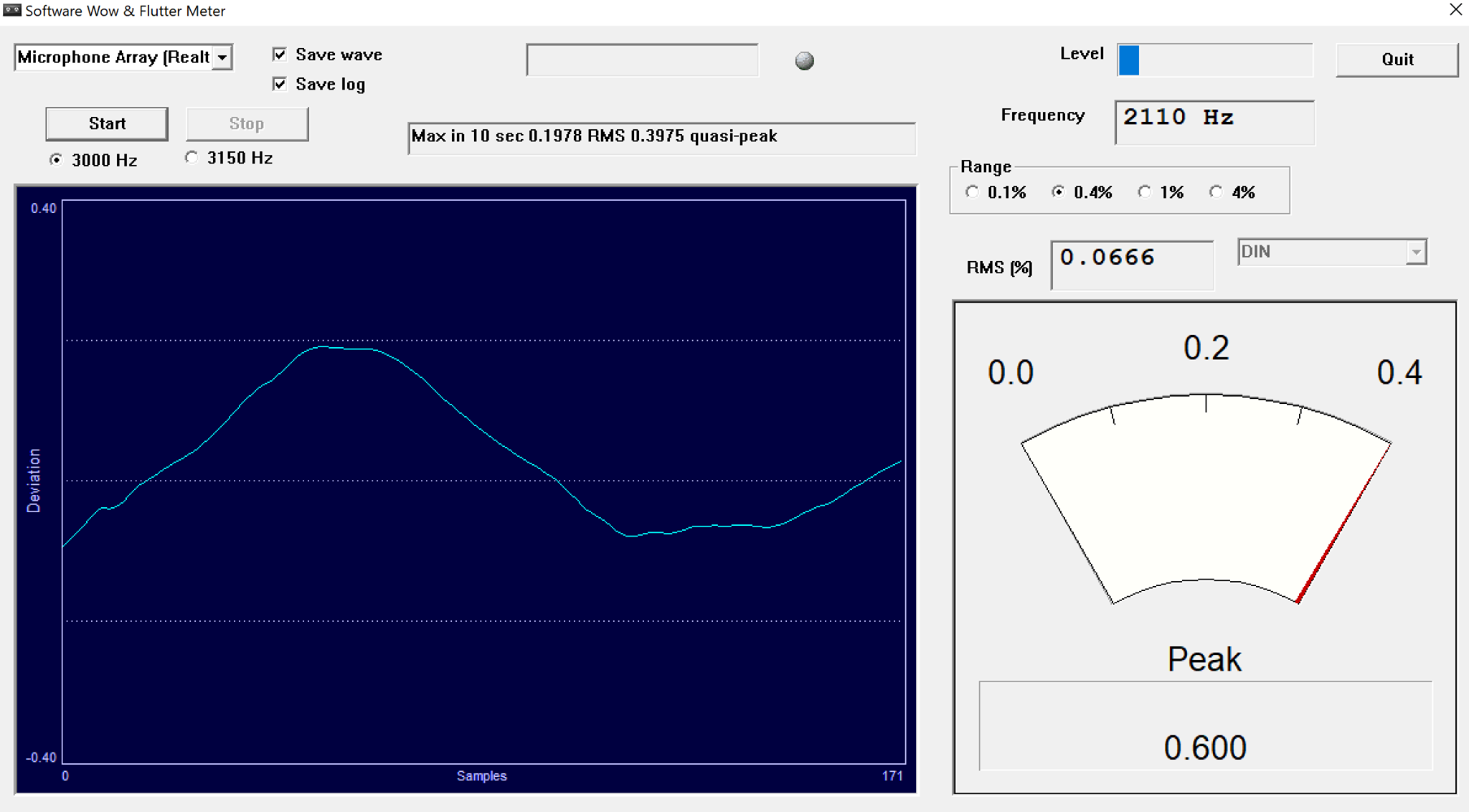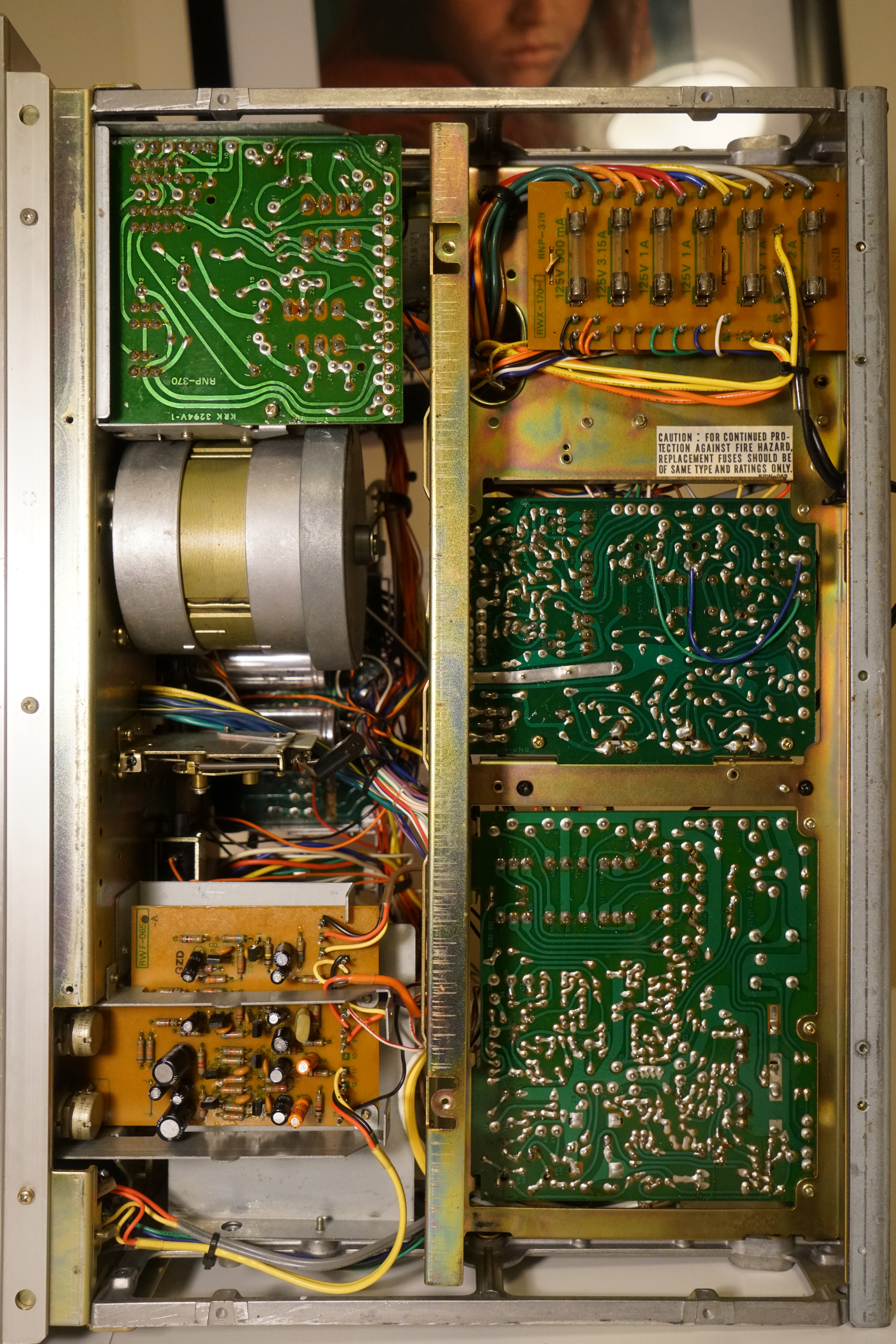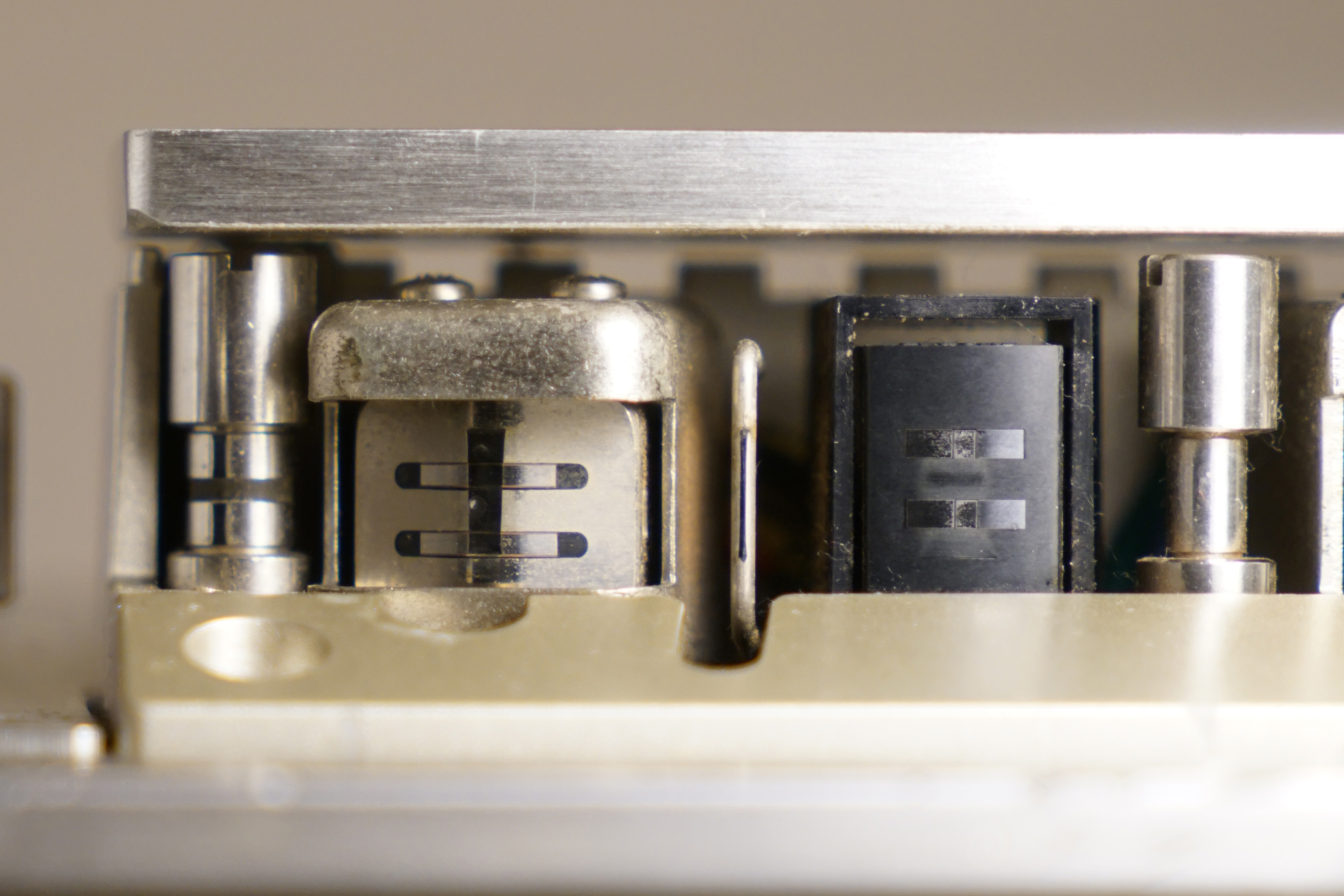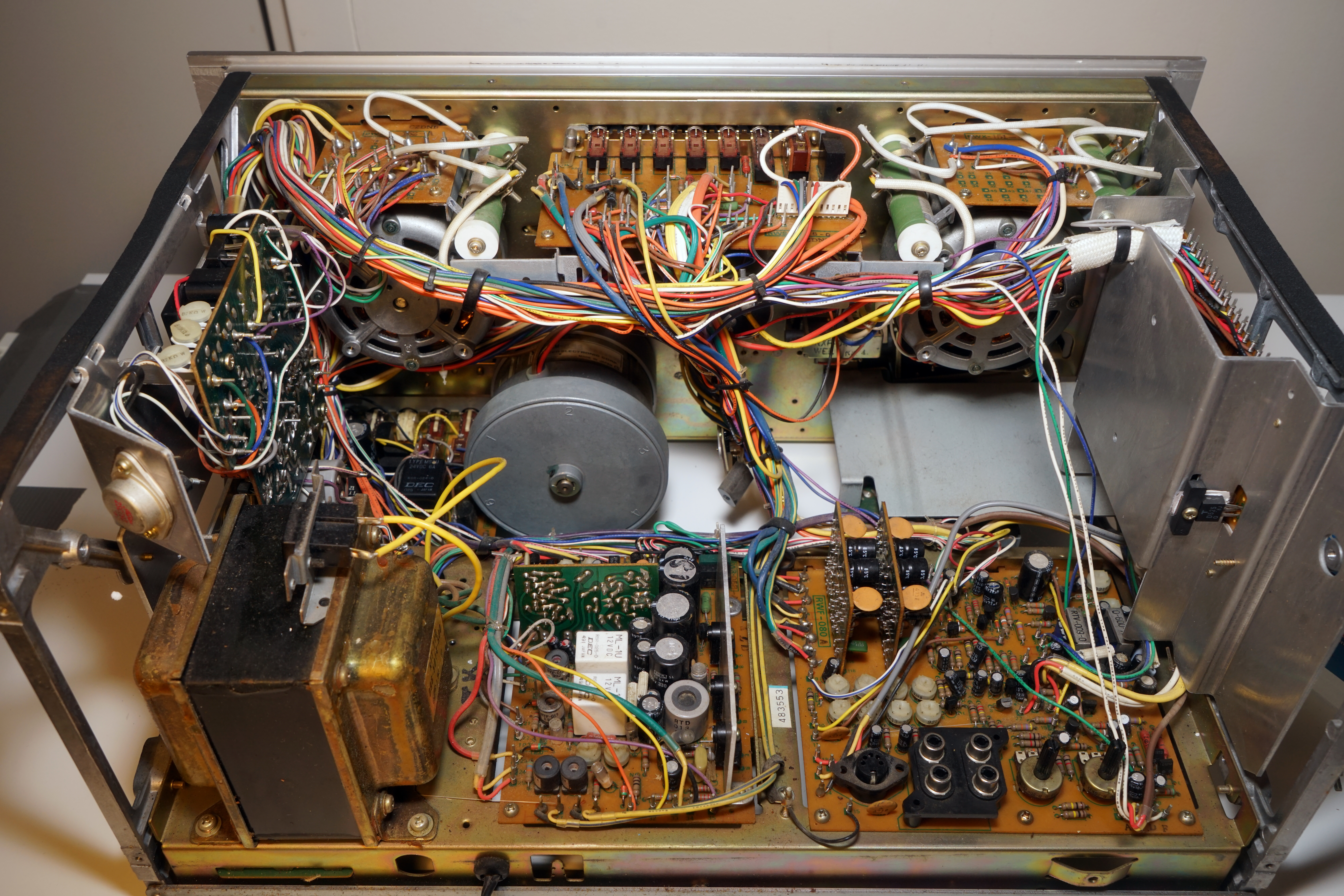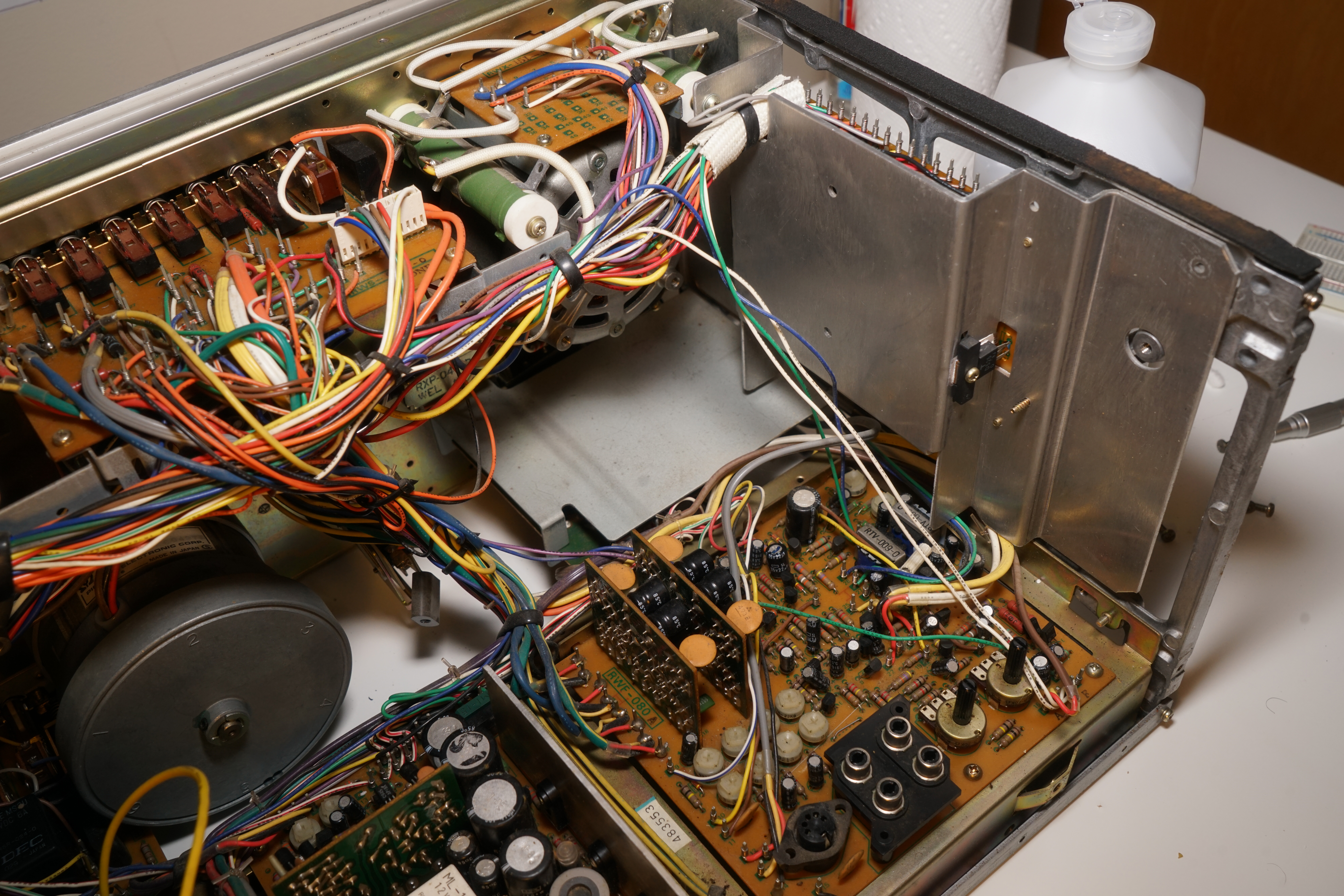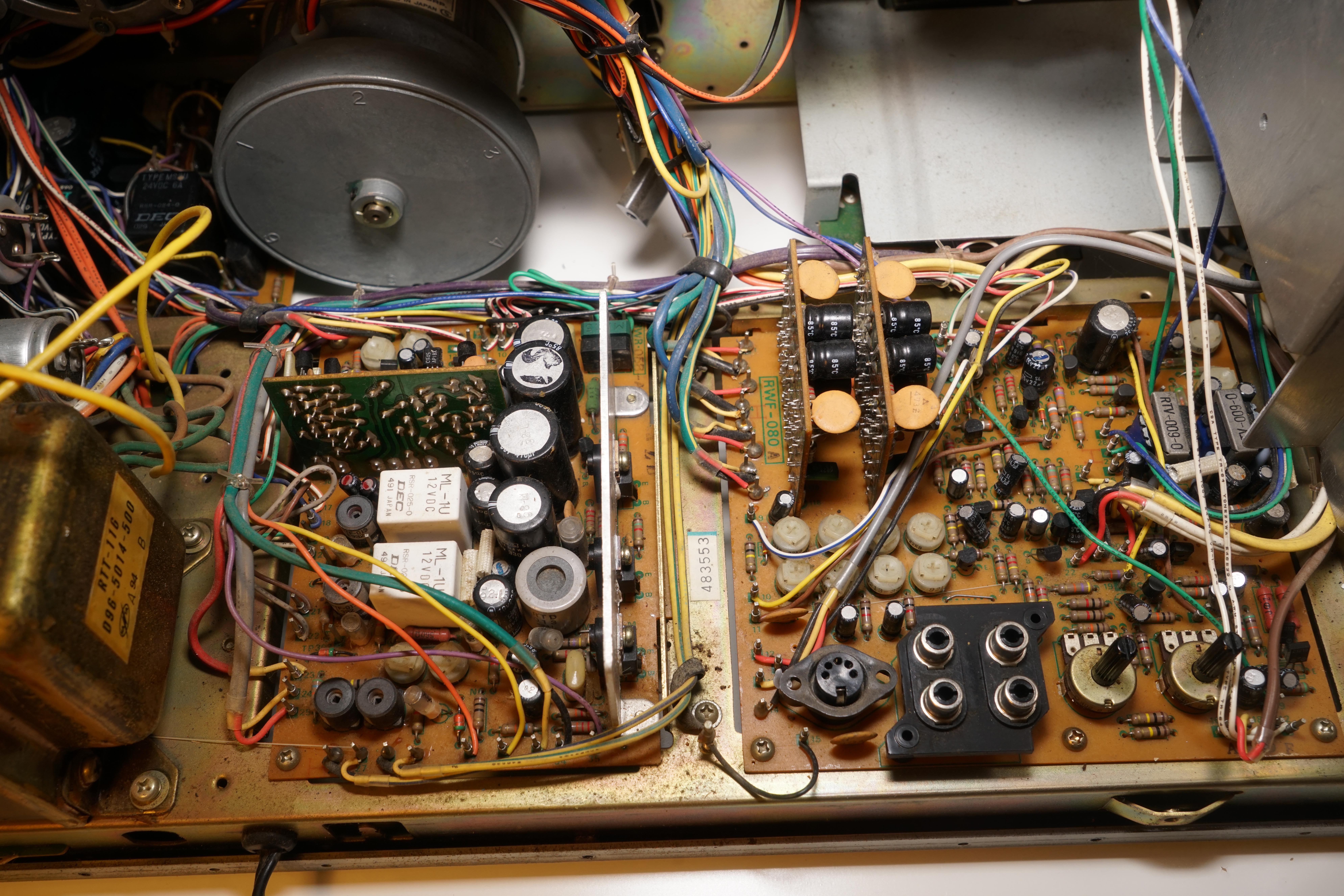Pioneer RT-707 Restoration
Background
I had purchased this RT-707 back in 2017, one of my most cherished purchases of all time. I performed some nominal maintenance on the unit, such as changing bulbs, cleaning and demagnetizing the heads, cleaning switches, at the time, however by 2019 it had degraded enough in performance that I was left with no choice but to start a full restoration.
My unit was manufactured in May 1979 and is an “improved” unit, as indicated by the triangle on the serial plate.
RT-707 Diagnosis & Symptoms
I recorded 440Hz, 3kHz, & 8kHz test tones using a website tone generator onto Maxwell UD 35-90 tape, and measured wow & flutter using the WFGUI application. I’m aware that proper W&F measurements should be made with a cal tape, but this test is more to establish that there is a problem to solve, rather than to accurately characterize the performance of the unit. (poor)
I then connected my network analyzer to the source input and the headphone output, characterizing the amplifier circuitry. This is bypassing the tape. This test simply is simply to confirm suspicions of HF roll off in the amplifier circuitry, due to leaky caps and such.
These are some of the issues I noticed:
- Terrible wow & flutter
- Fairly steady wow and flutter of of 0.17% WRMS and 0.59% Peak, nearly an order of magnitude greater than the 0.05 WRMS quoted spec. However, value was very unstable and could jump up to 0.60%, as seen in the WFGUI screenshot below, especially during the beginning of the tape. (3kHz test tone)
- Actual frequency measurements were 2.97kHz min, 3.03kHz max, average of 3kHz.
- This was clearly audible to the ears
- Again, this measurement was made in the incorrect fashion and is not a valid W&F measurement. It is to simply indicate an issue with the system.
- Varying amplitude of signal
- As you can see in the oscilloscope screenshot, the amplitude of the waveform varied constantly throughout the signal. This was clearly audible and visible in the VU meters. The variance in amplitude differed between the right and left channels.
- This varying amplitude was extremely noticeable at 3kHz and 8kHz test tones, however was greatly reduced at 440Hz.
- Perceived loss of HF and seemingly out of calibration bias and eq record settings
- I’m using Maxwell UD 35-90 tapes, and I noticed that the recommended LH bias and eq settings resulted in a muffled, dim sound. So, from the beginning I’ve set them to the STD position. Though overall I still noticed a loss of HF when recording.
- High noise floor
- Fairly loud hiss throughout all recordings. I can also hear an occasional thumping sound.
- Some nearly inaudible cross talk when listening to an blank side due to the other, recorded, side. Comes across as a sort of paper shuffling sound.
- Decent amplifier response, couple dB roll off at 10kHz + or so. (see bode plot attached) [yellow is input, blue is output] {apologies for not adjusting vertical axis}
Proposed Approach
- Clean and demagnetize heads, clean switches and pots. Sandpaper pinch wheel to remove tape residue and clean with alcohol. (These were completed before W&F measurements were made)
- Replace all suspect capacitors. (electrolytes, ceramics)
- Replace noisy transistors with modern equivalents.
- Characterize performance again.
- Lubricate and perform general mechanical maintenance. (more research into what this entails must be done)
- Characterize performance again.
- If performance is reasonable, try for calibration. (Purchase calibration tapes at this point)
Ordering Replacement Passives
I found this great restoration thread by Trevor on the AudioKarma forums. [thread] My contribution was creating a combined shopping cart on Mouser of all the components needed.
- Project Cart # d79068f1e7
- Replaces electrolytes, ceramics, suspect transistors, and trimmers. (10 turn pots for easy adjustment)
